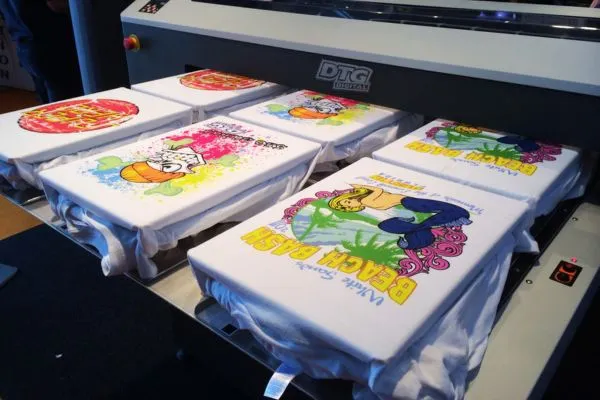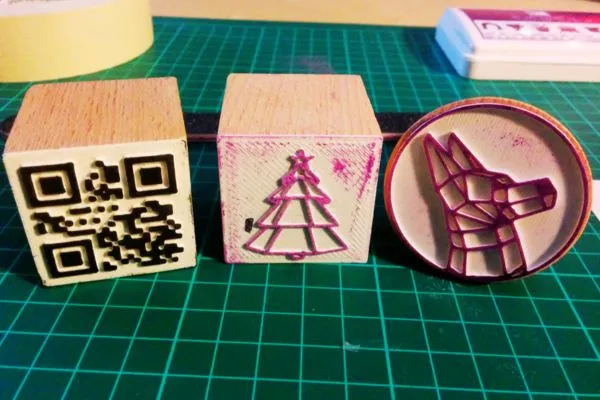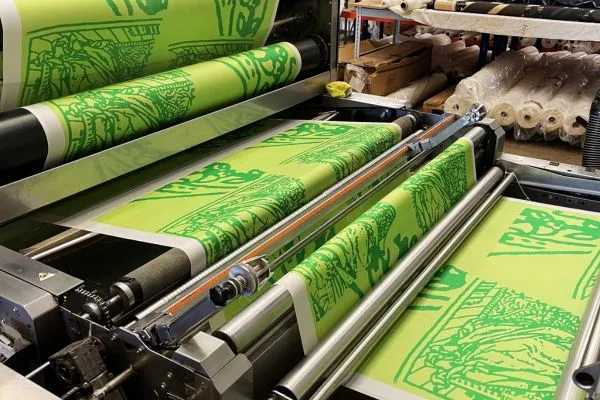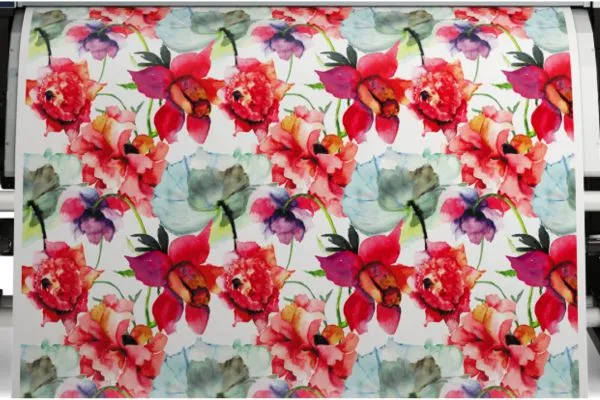Colors and designs are applied to textiles using textile printing. Plain fabrics are transformed into colorful works of art using various techniques, including screen printing, digital printing, and block printing. Textile printing on fabrics allows for elaborate and bright designs, customization, and artistic expression in fashion, home design, and other industries. So, In this article, you will get ideas about All-in-One Textile Printing Types and Applications.
Table of Contents
What is Textile Printing?

‘Printing’ is a Latin word which means ‘pressing.’ It ultimately denotes the process in which pressure is applicable during the printing process. So, in that sense, Textile printing refers to the process of the application of designs, images, and patterns to other fabrics and textiles.
Printing is usually performed on one side of the fabric to produce high-quality clothing, promotional products, and home decor items. Different types of textile printing methods offer countless opportunities for artistic expression and are widely used in the fashion, interior design, and even industrial sectors.
Different Types of Textile Printing
Here are some different types of textile printing methods. For instance, Block printing, roller printing, screen printing, heat transfer printing, digital printing on fabric, and more.
1. Block Printing:
Block printing, the oldest printing method, has been used in scarves decoration and handkerchiefs. In block printing, color is applied even to the wooden block with different designs. Then, the pattern gets put on the fabric.

2. Screen Printing:
In the screen printing method, the design is applied via screen silk or nylon on fabric by passing the print paste. It is also called silk screening, a technique for transferring designs onto various materials. Usually, the process involves creating a screen and applying it to the layers of ink, then onto the printing surface.
For businesses looking for efficient and high-quality textile printing solutions, contract screen printing services offer a convenient option. These services specialize in handling large-scale printing projects, providing expertise and resources to ensure precise and consistent results. Contract screen printing is a valuable choice for those seeking a reliable and professional approach to fulfilling bulk textile printing needs, ensuring the delivery of vibrant and durable designs.

3. Roller Printing:
Roller printing is the technique used when long runs of the fabric are printed using the same design. The design on the roller gets transferred to the fabric. It then enables intricate patterns and high-volume production.

4. Heat Transfer Printing:
Heat transfer printing is famous nowadays for polyester fabrics. Papers with the patterns of printing are applied to the fabric. After that, they are passed via a hot calendar to transfer the pattern from one to another.

5. Digital Printing:
Digital printing uses modern technology to transfer colored ink drops onto the fabric surface. Here, in the transfer method, unique electoral signals are to get unlimited color combinations. Inkjet is the best form of technology to be used in the digital printing of textiles.

There is another type of printing, spray printing, an earlier type of textile printing method. Spray printing entails applying dyes, inks, or pigments to cloth using a spray gun-like equipment. Tiny drops of color are turned into a spray and put on fabric to make patterns or designs. It’s a creative way to make fabrics look special, giving them different textures and blending colors smoothly.
What is Direct Printing in Textiles?

Direct printing is another form of printing in textiles, which means putting colors, designs, or patterns straight onto the fabric. It is a process where, instead of using any sort of method, colors go directly onto the fabric to make a detailed design on clothes and fabrics. In India, direct printing is the most practiced. There, bleached cotton or silk type of fabric is printed using carved wooden blocks.
Although it is a standard style of printing textiles, direct printing requires the dye to be applied to white or any colored fabric. Here, the printed portion is generally darker than the background of the dyed one. Direct printing or direct style of printing has applications in other printing methods, for instance, block, screen, or roller printing.
Screen Printing Techniques on Fabric
The method of transferring a stenciled image onto a flat surface using a mesh screen, ink, and a squeegee is known as screen printing. Screen printing offers various types of techniques on fabric. Some of the popular methods are:
1. Discharge Printing:
Discharge printing involves using the discharge inks. These inks remove the dye from the fabric and leave a bleached-out pattern, a unique effect. This screen printing technique is used on dyed fabrics most often.

2. Multi-color Printing:
Multicolor printing uses separate screens for each color to put intricate and colorful designs on fabric.

3. Half-tone Printing:
Halftone printing uses tiny dots of gradients and shades to create the illusion of different tones within the same design.

How do you print on fabric professionally and manually?
Fabric printing methods are now wide-ranging in terms of professional use and manual use. At home, you can apply a few fabric printing methods to print any design on fabric. Here is the list of methods that allow you to learn more about how to print on fabric by hand:
How to Print on Fabric by Hand?
- Stamp Printing
A stamp is created to imprint the design on the fabric. Usually, the design is cut into the stamp and dipped into the ink. Using pressure, you can transfer the stamp design onto your textile.

- Transfer Printing
Here, in this method, you can use transfer paper, a specialist paper, to hold your printed design to print onto the chosen fabric. Here, the medium is the standard or household-used steam iron. Unfortunately, it is not a permanent method of fabric printing.

How to Print on Fabric Professionally:
- Digital Printing
Digital printing is a contemporary fabric printing technique that employs inkjet technology. It transfers designs from digital files directly onto the fabric, providing excellent resolution, color accuracy, and versatility for complicated patterns, images, and small production runs without the use of screens or plates.

- Rotary Screen Printing
Rotary screen printing uses spinning cylindrical screens to transfer ink onto fabric continually. Each screen represents a color layer, enabling complex multicolor graphics to be created rapidly. It is ideal for mass production and ensures precise, colorful designs on textiles, which are frequently used in fashion and home décor.

Different Types of Digital Printing on Fabric
Here are the three different types of digital printing on Fabric:
- Direct Fabric Printing or Direct Printing
Direct-to-fabric printing is a technique in which the printer transfers the ink directly onto the fabric using inkjet technology. This printing technique allows for single-piece to long-run production. Cotton, silk, and nylon are the fabrics on which this technique is mostly applied.
- Rotary Screen Printing
Rotary Screen Printing is the use of cylindrical screens. These screens rotate in a fixed position within any cylindrical stencil. Also, the fabric keeps moving constantly between the screen and the roller. It is a continuous technique of high production of textile printing.
- Dye Sublimation
Dye sublimation is another digital fabric printing technique and method. Dye Sublimation creates a permanent link between the dye and the fabric’s fibers by using heat to transfer dye onto the fabric. Using certain sublimation inks, a design is printed onto transfer paper, and then the design is transferred to the fabric by applying pressure and heat. It is extensively used for sportswear, soft signs, and personalized items like mugs and phone cases.

Conclusion
Textile printing is the process of imprinting cool graphics or colors on materials. Apart from the mentioned printing types and methods, some special printing techniques include non-fabric printing, flock printing, batik, two-phase printing, etc. Each method has its advantages for creating attractive designs on clothing and other fabric items.
